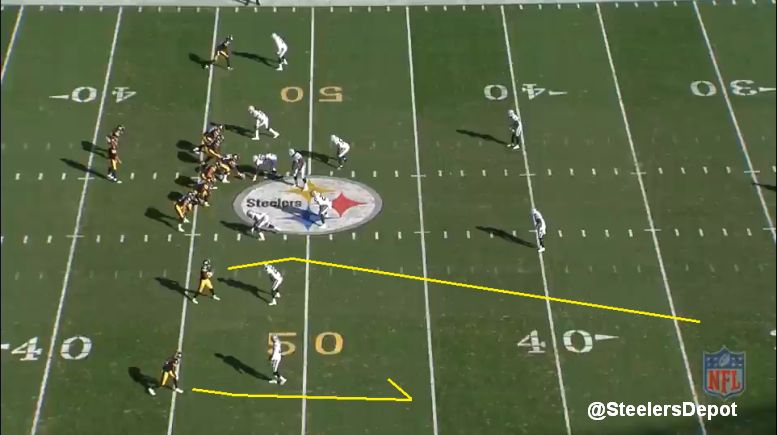Much like the Pittsburgh Steelers’ head coach Mike Tomlin, date website Pro Football Focus is also entering its 10th year in their current role in preparation for the 2016 season. While they approach the game from different points of view, surely, they are both looking upon none other than the exact same game.
But it is also a game that has seen a number of changes in that span of time, something that Tomlin has certainly spoken of a number of times in recent years, with respect to the idea that the majority of the game is now played with sub-package football rather than traditional ‘base’ sets.
Given that their bread and butter is data collection, PFF is able to provide some insights as to how the game has evolved in recent years, and one thing that they have focused on recently has been the rise of the slot receiver, as three-receiver sets have proliferated and for many teams become the norm in recent years.
The site treats the slot receiver position in many ways as its own unique position, much the same way that the slot cornerback requires its own unique functionality separate from the outside cornerbacks given the type of personnel they tend to line up against and, more importantly, the area of the field for which they are responsible.
One of the most interesting data points that Neil Hornsby brings to the table in the article to which I’m referring is a combination of charts that makes clear the distinctions between the outside wide receiver position and the slot receiver position by distinguishing the nature and frequency of the routes that are run.
For example, more than a fifth of all routes run from the outside are of the ‘go’ variety, and another fifth of the total routes can be accounted for with hitch routes. This makes a great deal of sense, particularly the latter, given the nature of the space in which the players have to work.
In contrast, go route and hitch routes each only account for roughly 12 percent of the total routes. Rather, slot receivers run twice as many crossing routes—16.5 percent to 8.4 percent—and there is also a statistically significant increase in the number of out routes from the slot—15.3 percent versus 11.8 percent.
They note that, in large part because of the nature of the routes that they run and the roles they serve within an offense, the average depth of target for a typical slot route is 3.4 yards more shallow than for an outside receiver, with the average for the slot being 9.8 yards, and outside routes reflecting a depth of 13.2 yards.
Unsurprisingly, there has been a marked increase in both the total number of slot routes run and the percentage of all routes run that are taken from the slot. Even just from 2009, total slot routes increased from about 48,000 to comfortably over 54,000 last year. Percentage of routes run from the slot increased from under 33 percent to nearly 37 percent








